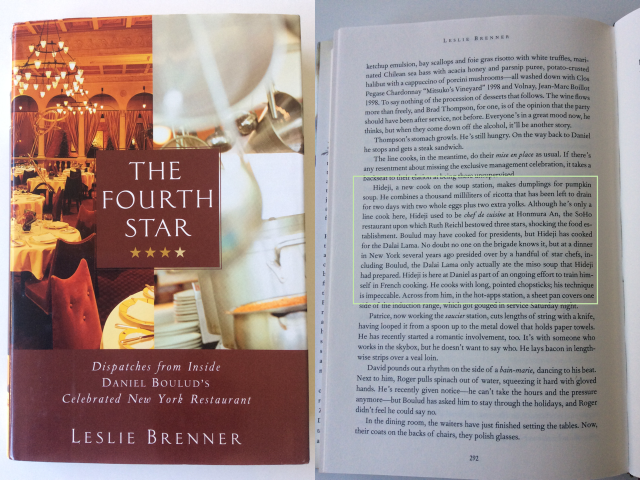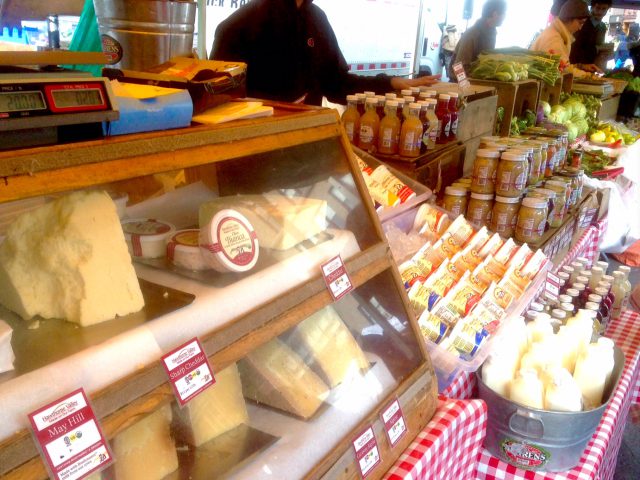
One New Yorker’s mission to spread Japanese “hacco” culture and holistic health philosophy (Part 2)
Hideji “Jay” Asanuma is a highly trained chef who now works as a holistic health coach in New York, pursuing the theme of food and health from various angles and spreading the culture of fermented Japanese foods.
✓You can check out his unique hacco recipes on haccola’s Jay’s Hacco-licious Recipes
Jay is a former chef, now holistic health coach, who teaches people about food and health. In the second part of this series, we asked him what global opportunities he sees lying ahead for traditional Japanese fermented foods.
Is the world aware of the health benefits of hacco foods?
At one point in his life, Jay’s culinary career had taken him all the way to France. Even now, he will seek opportunities to find examples of how food and people are connected to each other, and has become an expert on the different kinds of fermented cuisine around the world.
Nowadays, Japanese restaurants are a common sight in many countries, but it’s still rare for people in Paris or New York to have an accurate image when they hear of “fermented foods”.
Despite this, Jay is adamant. “Fermented foods has never ceased captivating the hearts of people.”
“Ask any French person to pick their favourite French food out of all the varieties, and they’re likely to mention bread, cheese and wine. You’ll find these on menus in most restaurants in New York, and people of all nationalities can enjoy a fresh baguette with mature cheese with a good wine as an everyday meal. And of course, all these products are fermented foods.”
Case in point. So does that mean many people recognise fermented foods as something good for their health?
”Most people probably don’t. They’ll know about fermentation, but I don’t think many people make the connection that these foods contain countless microorganisms thriving within.”
This was surprising to hear about New York, where the latest trends are supposed to come out from.
“Yes, but I’ve also recently started noticing a lot of yoghurts have “probiotic” labelled on their packages.”
If companies are marketing their probiotic products as beneficial for increasing good bacteria and conditioning the digestive system, perhaps there is growing interest in hacco products and their contribution to health after all.
All you need is love (and about 7 years of patience) to make organic natto
For Jay, a piece of warm, toasted baguette with a slice of cheese is just as much a soul food as a bowl of steamed rice with natto. What is it about fermentation that captivates him so much?
“Fermentation is amazing because the original flavours of the food is brought up through the process. The ingredients could already be delicious as they are, but fermentation will boost their appeal to the point of being so captivating. In Japanese, the word “brew” can also be used to describe feeling and atmosphere, and I think it fits perfectly with the appeals of hacco foods.”
Nutritionally, the same ingredients can increase in nutritional values after fermentation, and become better digestible.
For example, cooked soybeans are allegedly 68% digestible, but data shows the digestive rate of natto is 85%! http://www.natto.or.jp/hyakka/ped_zuno06.html
Attempting to eat 80g of beans can leave you feeling bloated, but a packet of natto doesn’t give you that effect when it’s lapped up. Another example of hacco magic!
Since moving away from Japan’s humid climate, it took Jay 970 attempts over 7 years to find the key to a stabilised condition to produce high quality natto. Our hats go off to his dedication and passion.
“I started my research with very little understanding of what I was doing. I learned how extremely difficult it is to control the process of fermentation,” reflects Jay.
“Bacterias are living organisms. They won’t open their hearts up to you unless you pour your heart out to them, to the point of being able to communicate with each other. I’d love to be able to communicate with the bacteria at a much deeper level.”
The products that come from his labour of love – natto, miso, koji among others – are showcased on his blog, and has gained many fans from residents of the city.
You can check out his recipes here at haccola too(Jay’s Hacco-licious Recipes).
All the recipes are simple and highly original (only what you could expect from an expert chef!) and will no doubt be a hit at lunch or dinner parties.
Could Japanese hacco products change the world?
New York is a city where the finest and the authentic gather from all over the world. The traditional foods that Jay advocates is not just Japanese culture, they’re superfoods that can cater to the universal needs for both tastiness and healthiness.
Perhaps one day, when the rest of the world start seeking more fermented foods, three star restaurants in Manhattan will begin serving natto.
translation: NIKKI KITTENMOUTH
Click here to read this article in Japanese
One New Yorker’s mission to spread Japanese “hacco” culture and holistic health philosophy (Part 1)




